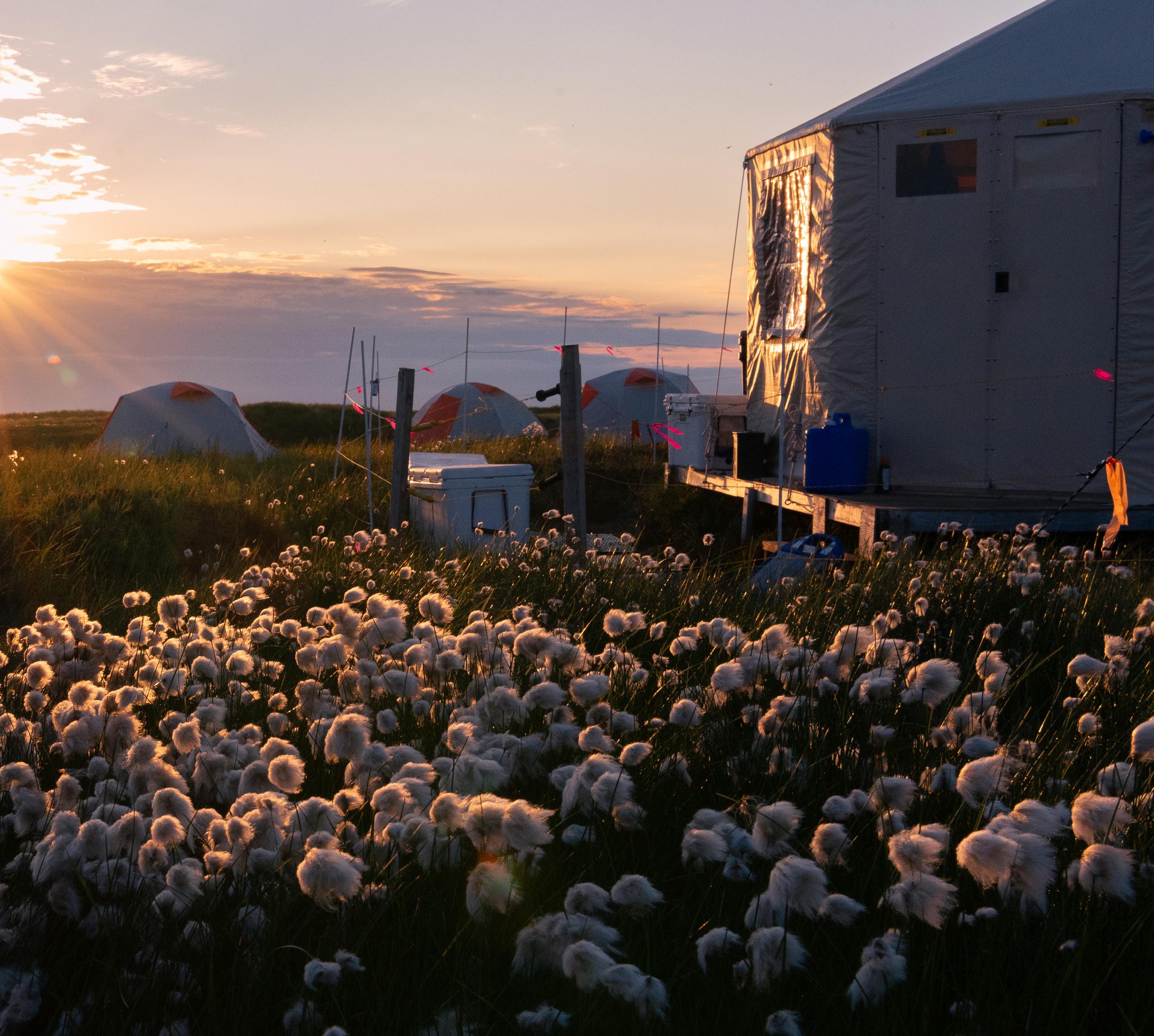

Natural atmospheric cycle has been stalling the loss of Arctic sea ice
New research on the role of a wind pattern called the “Arctic dipole” suggests the trend may soon reverse
Dr. Heather Goldstone Chief Communications OfficerThe loss of Arctic sea ice has been a conspicuous hallmark of climate change. But the rate of loss slowed after sea ice extent hit a record low in summer 2012, even though global and Arctic warming continued unabated. New research by an international team of scientists explains what’s behind that perplexing trend. The findings indicate that the stall is linked to an atmospheric wind pattern known as the Arctic dipole, and that stronger declines in sea ice extent will likely resume when the dipole reverses itself in its naturally recurring cycle.
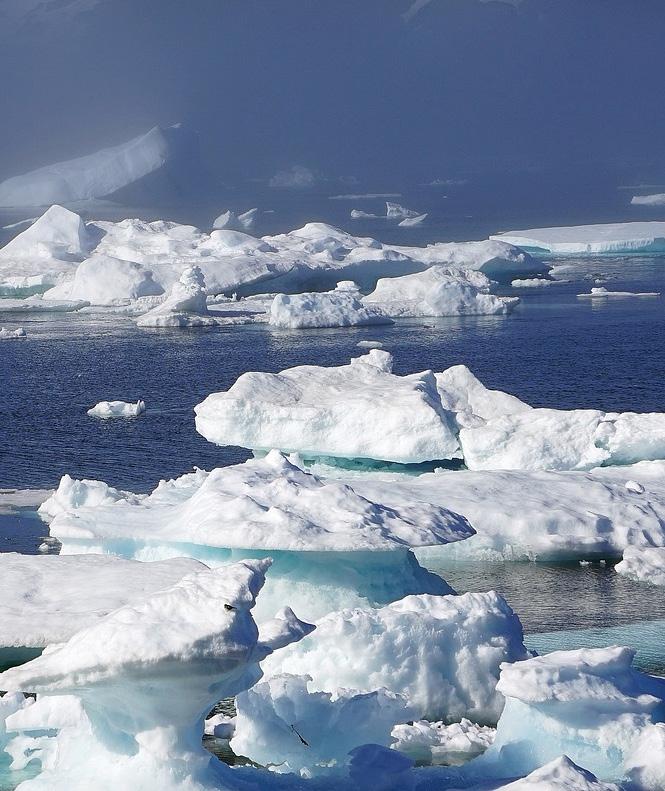
The many environmental responses to the Arctic dipole are described in a paper published recently in the journal Science. Woodwell Climate’s Dr. Jennifer Francis is among the international cohort of co-authors, led by professor Igor Polyakov of the University of Alaska Fairbanks College of Natural Science and Mathematics, also affiliated with the International Arctic Research Center at UAF.
“This is a multidisciplinary view of what’s going on in the Arctic and beyond,” Polyakov said of the new research. “Our analysis covered the atmosphere, ocean, ice, changing continents and changing biology in response to climate change.”
The Arctic dipole is a large-scale wind pattern that—depending on its direction—can either drive warmer Atlantic Ocean water into the Arctic, or counter that effect. In the Arctic dipole’s present “positive” regime, which scientists say has been in place since 2007, it is the latter. High pressure is centered over the Canadian sector of the Arctic and produces clockwise winds, while low pressure centered over the Siberian Arctic generates counterclockwise winds.
“This oscillating wind pattern drives upper ocean currents, with year-round effects on regional air temperatures, atmosphere-iceocean heat exchanges, sea-ice drift and exports, and ecological consequences,” added Dr. Jennifer Francis, a co-author and Senior Scientist at Woodwell Climate Research Center.
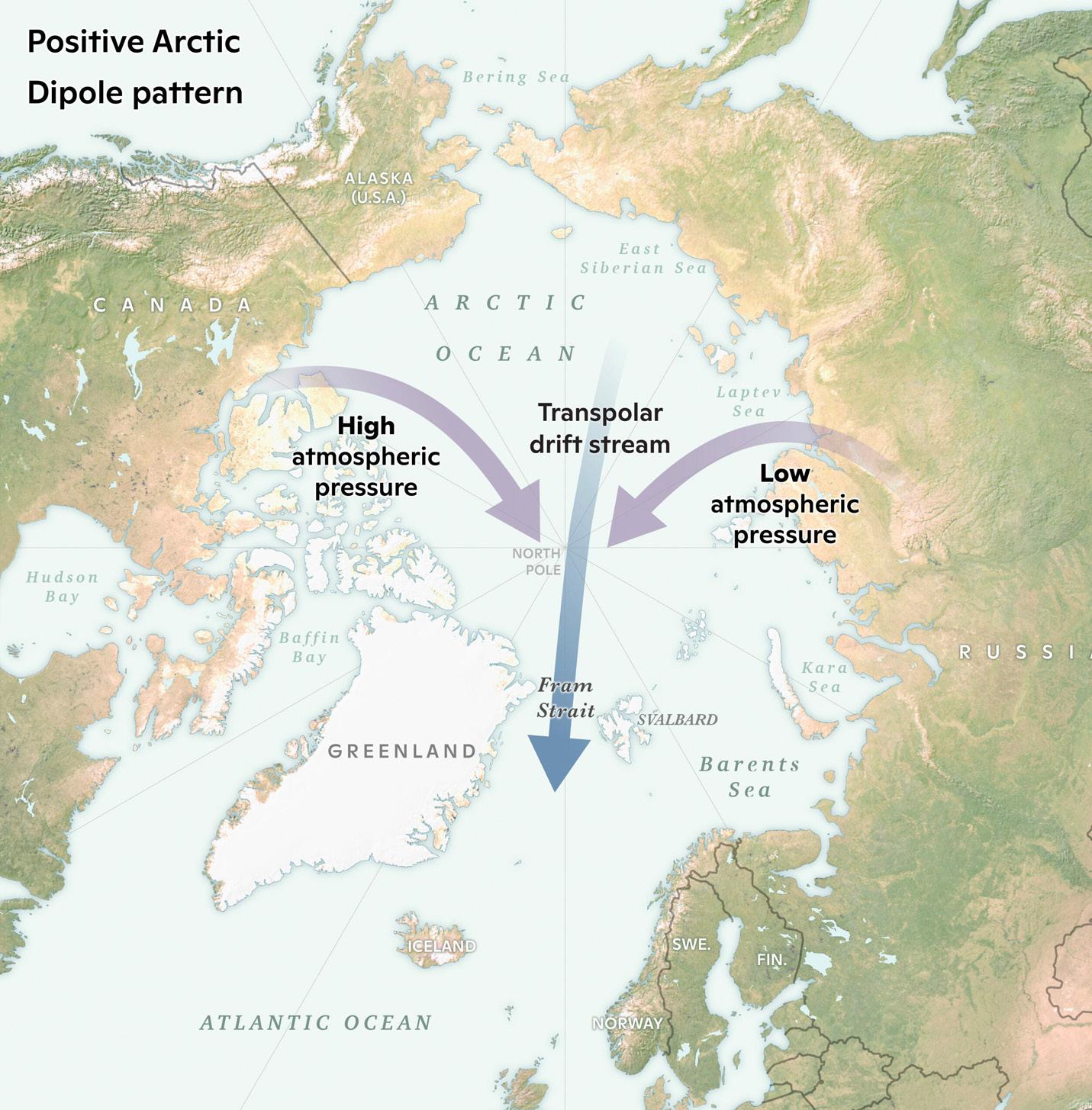 top: stock Arctic image
bottom: map by Christina Shintani
top: stock Arctic image
bottom: map by Christina Shintani
In analyzing oceanic responses to the wind pattern since 2007, the researchers found decreased flow from the Atlantic Ocean into the Arctic Ocean through the Fram Strait east of Greenland, along with increased Atlantic flow into the Barents Sea, located north of Norway and western Russia.
The authors write that, “Water exchanges between the Nordic seas and the Arctic Ocean are critically important for the state of the Arctic climate system” and that sea ice decline is “a true indicator of climate change.”
“We also found that counterclockwise winds from the low-pressure region under the current positive Arctic dipole regime drive freshwater from Siberian rivers into the Canadian sector of the Arctic Ocean,” commented Francis.
This westward movement of freshwater from 2007 to 2021 helped slow the overall loss of sea ice in the Arctic compared to 1992 through 2006. The freshwater layer’s depth increased, making it too thick and stable to mix with the heavier saltwater below. The thick layer of freshwater prevents the warmer saltwater from melting sea ice from the bottom.
The authors write that the switchgear mechanism regulating inflows of sub-Arctic waters has “profound” impacts on marine life. It can lead to potentially more suitable living conditions for subArctic boreal species near the eastern part of the Eurasian Basin, relative to its western part.
A wealth of various data, including direct instrumental measurements, weather observations, and satellite information going back several decades, shows that the Arctic dipole alternates in an approximately 15-year cycle and that the system is probably near the end of the present regime.
“We are beyond the peak of the currently positive Arctic dipole regime, and at any moment it could switch back again,” Polyakov said. “This could have significant climatological repercussions, including a potentially faster pace of sea-ice loss across the entire Arctic and sub-Arctic climate systems.”
The research was funded by the U.S. National Science Foundation and the U.S. Office of Naval Research.
A new dynamic in Arctic greenhouse gas fluxes
Arctic wetlands are known emitters of the strong greenhouse gas methane. Well-drained soils, on the other hand, remove methane from the atmosphere. In the Arctic and boreal biomes, well-drained upland soils cover more than 80% of the land area, but their potential importance for drawing methane from the atmosphere—the underlying mechanisms, environmental controls and even the magnitude of methane uptake—have not been well understood.
A recent study led by researchers from the University of Eastern Finland and University of Montreal, in collaboration with Woodwell Climate Research Scientist, Dr. Anna Virkkala, has expanded our understanding of these dynamics, finding that Arctic soil methane uptake may be larger than previously thought. The results show uptake increasing under dry conditions and with availability of a type of soil organic carbon that can be used in microbial uptake processes.
The study was primarily conducted at Trail Valley Creek, a tundra site in the Western Canadian Arctic. The authors used a unique experimental set-up consisting of 18 automated chambers for continuous measurements of methane fluxes. No other automated chamber system exists this far North in the Canadian Arctic, and only few exist above the Arctic circle
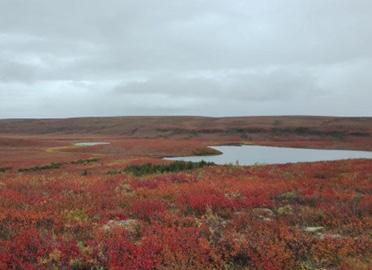 Upland tundra landscape during autumn near Inuvik, Western Canadian Arctic. / photo by Carolina Voigt
Upland tundra landscape during autumn near Inuvik, Western Canadian Arctic. / photo by Carolina Voigt
As the climate dries, methane consumption increases, a recent study finds
Sarah Ruiz Science Writer Carolina Voight Research Associate, Universität Hamburg
globally, most of which are installed at methane-emitting sites.
The high-resolution measurements of methane uptake (more than 40,000 flux measurements) revealed previously unknown daily and seasonal dynamics: while methane uptake in early and peak summer was largest during the afternoons, coinciding with maximum soil temperature, uptake during late summer peaked during the night. The study shows that the strongest methane uptake coincided with peaks of ecosystem carbon dioxide respiration—meaning that as methane is removed from the atmosphere, carbon dioxide production in the soil is high. Complementing flux measurements at Trail Valley Creek with measurements at other sites spread across the Canadian and Finnish Arctic showed that the availability of soil organic carbon and other nutrients may promote methane consumption in Arctic soils.
“The methane cycle has previously been primarily studied in wetlands because of their high methane emissions, but this study shows that drier ecosystems are also very important in the methane cycle,” says Dr. Virkkala.
These findings are highly relevant for estimating the current Arctic carbon budget, and for predicting the future response of Arctic soil methane uptake to a changing climate. According to the study, high-latitude warming itself, occurring up to four times faster in the Arctic than the rest of the world, will promote atmospheric methane uptake to a lesser extent than the associated largescale drying.
“The Arctic methane budget has remained highly uncertain,” remarks the paper’s lead author, Dr. Carolina Voigt. “Our research provides one potential mechanism that might explain those uncertainties, and highlights the importance of methane measurements in drier ecosystems to calculate more accurate methane budgets.”
Futures forged in trust
Community risk assessments build international collaboration, expand access to climate data
Sarah Ruiz Science Writer“There are so many cultural differences to consider,” notes Dave McGlinchey. “From how the meetings proceed, to specific local sensitivities, even down to Congolese humor. Even if I was cracking jokes in fluent French, it would be impossible to get the tone right. That’s why having someone like Joseph was so important.”
In July, McGlinchey, Chief of Government Relations at Woodwell Climate, traveled with members of the Center’s risk team to Kinshasa in the Democratic Republic of Congo for a two-day workshop. The Center has been involved in community work in the country for over 15 years, led in large part by Joseph Zambo, Woodwell’s policy coordinator in the DRC. This workshop represents the latest collaboration—an initial assessment of the country’s future climate risks. Congolese professors, scientists, and government officials joined to discuss gaps in the data and to develop adaptation strategies to be included in a final report later this year.
The workshop was facilitated by Zambo who, with poignant questions, stories to recount, and a touch of humor, guided the group through the tough work of planning for the future.
Expanding access to climate risk data
The community risk work in Kinshasa is one of over 20 successful risk assessments conducted as part of Woodwell Climate’s Just Access initiative. The project produces free, location-specific climate risk analysis for cities and regions both in the US and abroad. The hope is that, by providing free access to quality data—something often offered by private companies at prohibitively high costs—Just Access can facilitate
adaptation planning for under-resourced communities.
“With Just Access, we want to remove the barrier of cost for communities that want to understand the long-term risks they are facing because of climate change,” says McGlinchey. “Often these communities are the ones already facing climate-related challenges that will worsen as the century goes on.”
Guided by a community’s particular concerns, Woodwell’s Risk team works with available data on key climate risks— flooding, heat, water scarcity, fire—and uses models to construct an image of how those events are likely to change as global temperatures climb. In the DRC, water is a core concern, both in its absence, causing drought and crop failure, and in its abundance.
“Heavy rains cause horrific flooding in the city of Mbandaka almost once or twice a year,” says Zambo. “In the capital, heavy rains are also destroying homes, roads, electrical structures, and internet connections.”
The most pressing risks vary from region to region. Across the world, in Acre, Brazil, Senior Scientist Emeritus Dr. Foster Brown says, “the word here is ‘heat.’” In Homer and Seldovia, Alaska, increasing wildfire days featured heavily. But improvements in data availability and resolution, as well as refinements of climate models, have made it possible to replicate assessments for a variety of risks in places as distant and different from each other as Homer, Alaska and Kerala, India. Risk assessments can offer both region-wide crop yield estimates and street-level maps of flooding for a
single city district to inform community planning.
It’s about building trust
Key to the success of municipal-level work are relationships with people like Zambo, who can offer insights into the needs of a community that can’t be approximated from the outside. Each community is different—in what information they need to make decisions, their level of technical expertise, their governmental capacity to implement changes, and in the ways they prefer to work.
So, with each new assessment, the Risk team starts from scratch, building new relationships and listening to community needs. This process takes double time on the international stage, where a history of superficial NGO and academic involvement can overshadow collaboration.
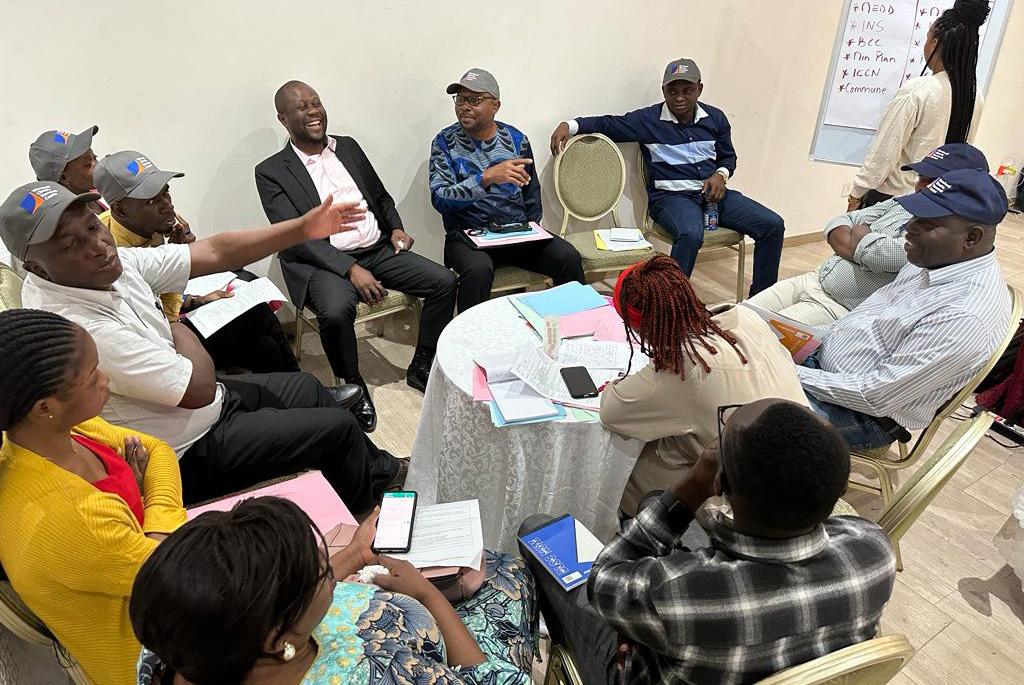
“A main goal with these reports is trust,” says Darcy Glenn, a Woodwell Climate research assistant who organized a risk assessment and workshop for Province 1 in Nepal last year with help from connections from her master’s program. “Building trust in the models, and trust in the methodology, and in us. That’s been our biggest hurdle when working with municipal leaders.”
Building that trust takes time. Province 1 was one of an early set of communities who worked with Woodwell Climate on risk assessments. While local leaders were interested in flooding and landslide risk information, what they really wanted was to increase the capacity of their own scientists and government employees to conduct climate modeling themselves. So the project was adapted to meet that need by tailoring a training workshop. The process took over a year to complete but Glenn says, that’s relationship-building time that can’t be rushed.
It also highlights the importance of preestablished long term connections in the places we work.
“It’s one thing to go into a new community by yourself, it’s another to go in with someone who has been there 30 years and can help navigate,” says Dr. Brown. “You have to look for the key people who can help make things happen.”
Within Brazil, Dr. Brown is now regarded as one of these “key people.” He has been living and working in Rio Branco for over 30 years and his credibility as a member of the community helped facilitate an assessment of extreme heat risk in the region. In the DRC, Zambo has been working with Woodwell Climate
on various projects for over a decade. Without their expertise to bridge cultural and language gaps, completing projects in Brazil and the DRC would not have been possible.
Working for the future
After getting risk information into the hands of communities, then comes the hard work of putting it to use. For Dr. Christopher Schwalm, Director of Woodwell Climate’s Risk Program, “the goal of the risk assessments is to give communities every potential tool we can to build resilience for themselves and future generations. With access to the right information, the next step in the adaptation planning process can begin.”
In Rio Branco, Dr. Brown says speaking to the changes people are already noticing has helped individuals connect better to the data. He’s been using the context of heat and fire alongside information from their report to strengthen conversations about existing forest and climate initiatives, authoring an alert for the tri-national “MAP” region (Madre de Dios in Peru, Acre in Brazil, and Pando in Bolivia) about heat conditions and the implications for this year’s fire season. He has also been introducing the information from the report to the community in other ways—teaching and speaking at events. According to Dr. Brown, widespread understanding of both near- and long-term climate risks will become more important for all communities as climate change progresses and impacts each place differently. Cities and towns will need reliable information to help them practically plan for the future.
“We’re trying to get people to expand their time ranges and start thinking about the future. And this report has helped,” says Dr. Brown. “Because the people who are going to see 2100 are already here. What will we be able to tell them about their future?”
Think like an ecosystem
It didn’t matter that she didn’t speak any English at the time, or that the American researchers who had chartered her father’s boat that summer didn’t speak any Russian, 14 year-old Anya Suslova was a quick learner. She watched them dip sample bottles into the Lena River, filter the water, and mark information down on the side of the bottle. By the end of the two week research expedition, Suslova had mastered the protocol and was helping Dr. Max Holmes and his fellow scientists collect water samples.
When the scientists returned to the United States, they left behind some equipment, in case Suslova and her father were interested in sampling throughout the winter. After a year without contact with Suslova, the researchers were delighted to return to the Lena the following summer to find months of samples and a neatly organized logbook she made.
Twenty years later, Suslova is a Research Assistant at Woodwell Climate Research
Center who continues to bring her expertise and unique perspective to the Arctic Great Rivers Observatory (ArcticGRO). Since 2003, participants of ArcticGRO—scientists and Arctic community members alike—have been sampling water from the six largest rivers in the Arctic: the Ob’, Yenisey, Lena, and Kolyma in Siberia, and the Yukon and Mackenzie in North America. It’s a rare example of a long-term research project, designed to span decades, deepening our understanding of change across the years.
We need to establish baselines
The Arctic is warming, on average, at least two times faster than the rest of the planet. We need to know the implications of this, but it can be difficult to study ecosystem change across such a vast area. Rivers can offer insights. The chemistry of a river connects environmental processes across its watershed, and the dissolved and particulate materials that are carried to the ocean can influence marine chemistry and biology. Measuring
the concentrations of these materials, and how they are transported by rivers, provides vital information about changes in the linkages between terrestrial and aquatic ecosystems.
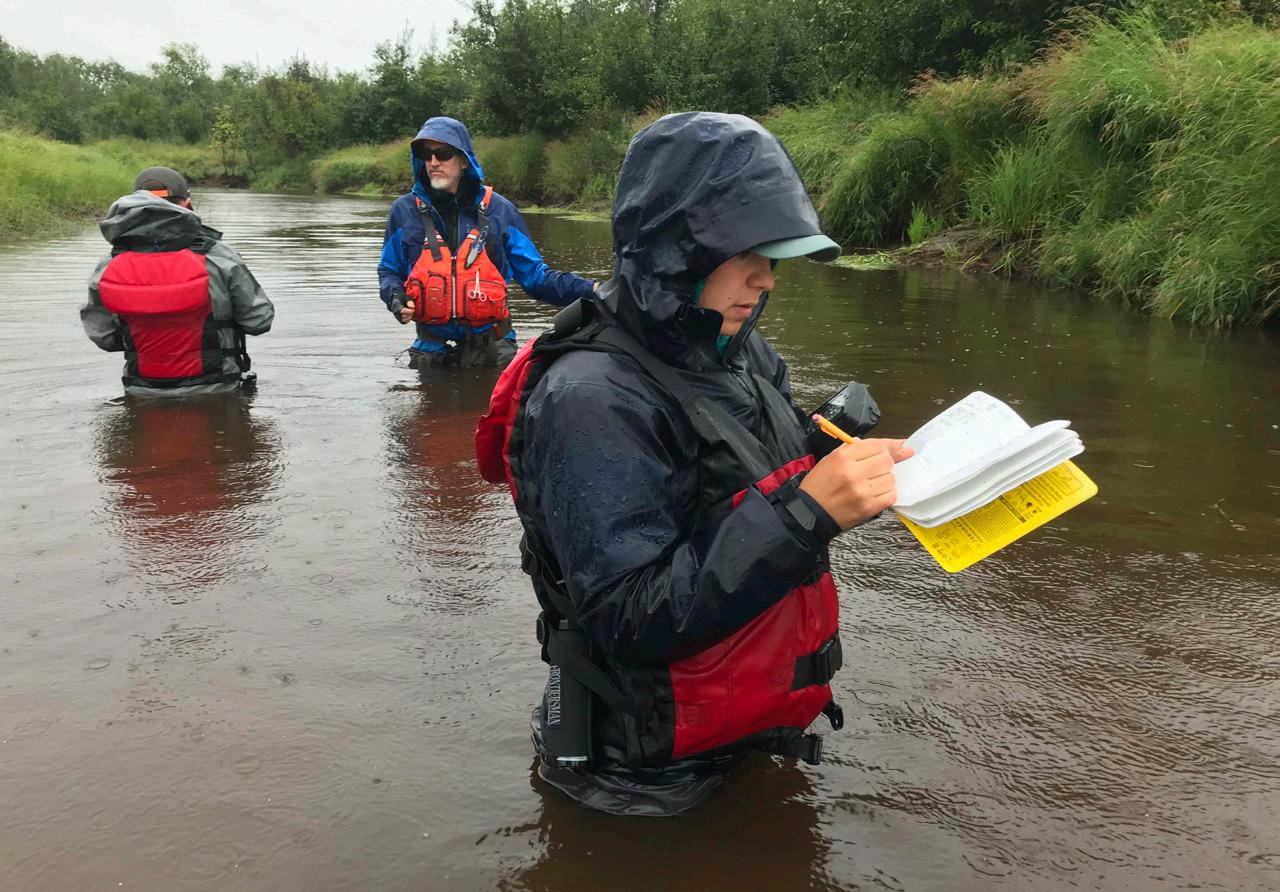
“Global climate change is rapidly and disproportionately affecting northern high latitude environments,” says Dr. Scott Zolkos, a Research Scientist at Woodwell Climate and one of ArcticGRO’s lead scientists. “Monitoring Arctic river chemistry is critical for detecting trends and understanding the effects of environmental change on northern ecosystems.”
In order to uncover those trends and effects, we need to establish baselines on the key chemical constituents within rivers—organic matter, inorganic nutrients like nitrogen, sediments—to compare against future measurements. The more data gathered, the easier it is to sift out annual variability from longer term trends.
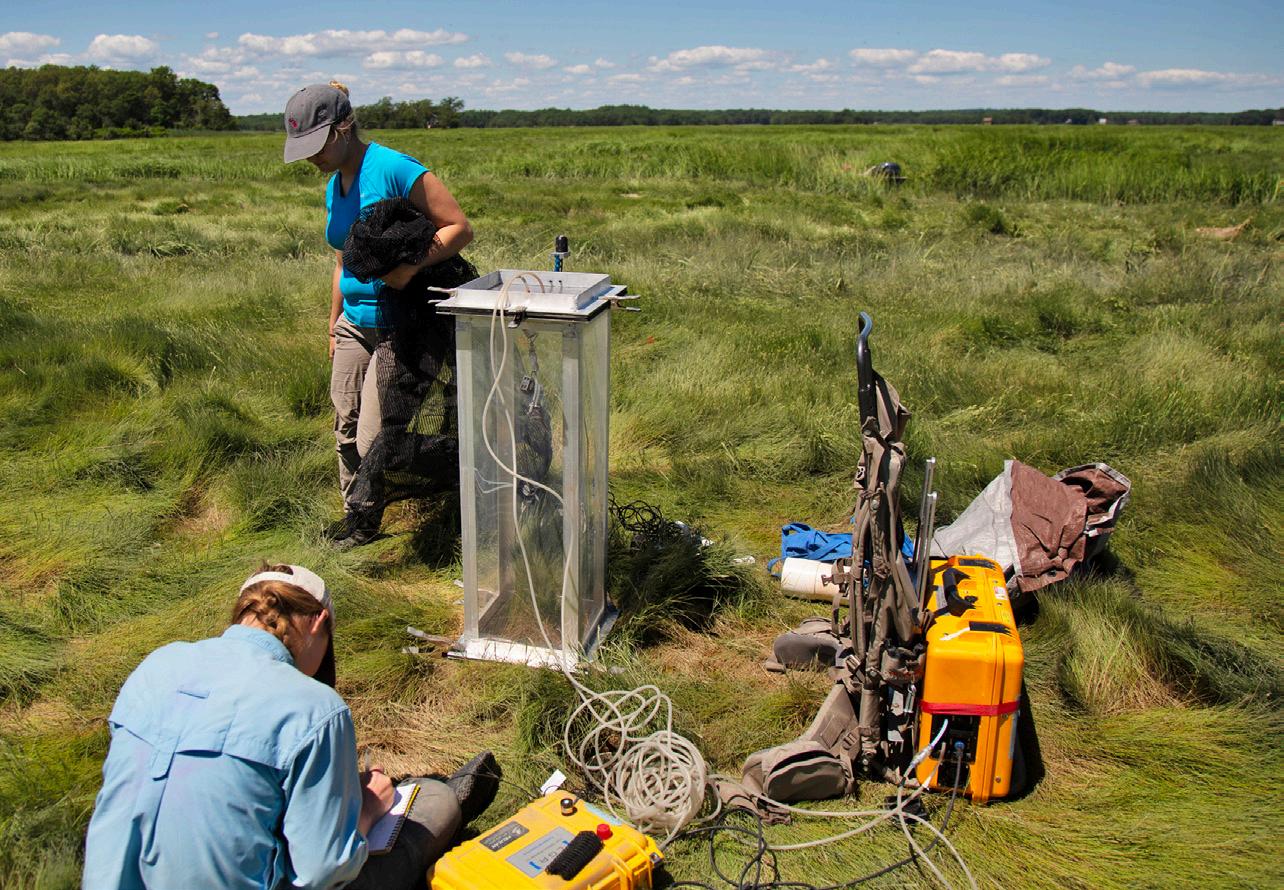 left: TIDE researchers take measurements in Plum Island Estuary. / photo by Hillary Sullivan right: Anya Suslova on an Arctic river research trip. / photo by John LeCoq
left: TIDE researchers take measurements in Plum Island Estuary. / photo by Hillary Sullivan right: Anya Suslova on an Arctic river research trip. / photo by John LeCoq
Two long-term research projects enter their third decade, bringing new insights into ecological change
Sarah Ruiz Science Writer
So, using Arctic rivers as sentinels of ecosystem health and environmental change was the idea behind the project’s creation, but it was the international collaboration that started with Suslova that gave ArcticGRO its longevity. The project leaders realized that enlisting the help of trained local residents could allow for sample collection in places, and during times of the year, that the researchers themselves couldn’t access. It also helped build enthusiasm for the project among Arctic communities.
“I believe that ArcticGRO has been able to go for so long because it is built on trust and a shared goal between scientists and local people who collect water samples,” says Suslova. “Amazingly the team of ArcticGRO hasn’t changed much over the last two decades, many of the original members are still involved. It feels like a family.”
Now, 20 years after its inception, the ArcticGRO team has published a paper in Nature Geoscience on long-term trends in pan-Arctic river chemistry. The team found strong signals of environmental change for some chemical constituents, but not in others. Alkalinity, which reflects rock weathering, increased in all rivers, while nitrate, an important
nutrient for terrestrial and aquatic organisms, decreased. The authors hope the data and insights from this work will be invaluable to scientists refining models of the Arctic system.
“There’s nothing quite like ArcticGRO,” says Dr. Zolkos. “It’s unique in that it measures a comprehensive suite of chemical parameters across the Arctic’s largest rivers, uses consistent sampling and analytical methods across the rivers, and sampling occurs at the same times and locations. The consistency of ArcticGRO is increasingly valuable, because it is building a dataset which allows scientists around the world to detect, monitor, and understand northern environmental change in ways that no other scientific program does.”
We never would have known
A few thousand miles south of the Arctic circle, on the marshy coastline of Massachusetts, another long-term ecological research project has entered its third decade as well. The brainchild of Senior Scientist Dr. Linda Deegan, the TIDE project is unique even among long-term studies. Rather than simply monitoring the nutrient flows in the salt marshes of Plum Island Estuary, the TIDE project has been altering
nutrients in carefully controlled amounts to understand the long term impacts of human development in coastal ecosystems.
TIDE focuses on nitrogen, an element of most fertilizers and a common pollutant from developed areas in the uplands. Previous studies of nitrogen impacts indicated coastal marsh plants could absorb a lot of nitrogen with no ill effects. But that dynamic was only examined on short time scales, and in small plots of marsh. Whether there were changes that might require many years or many acres to be detected, was unknown.
Thus TIDE was designed to increase nitrogen concentrations in the water to mimic coastal eutrophication across three marshes in the Plum Island estuary and document which effects might cascade through the system. The initial grant was for five years, but Dr. Deegan and her collaborators wanted to keep the project running for at least a decade, if not more, expecting the changes might be slow to reveal themselves.
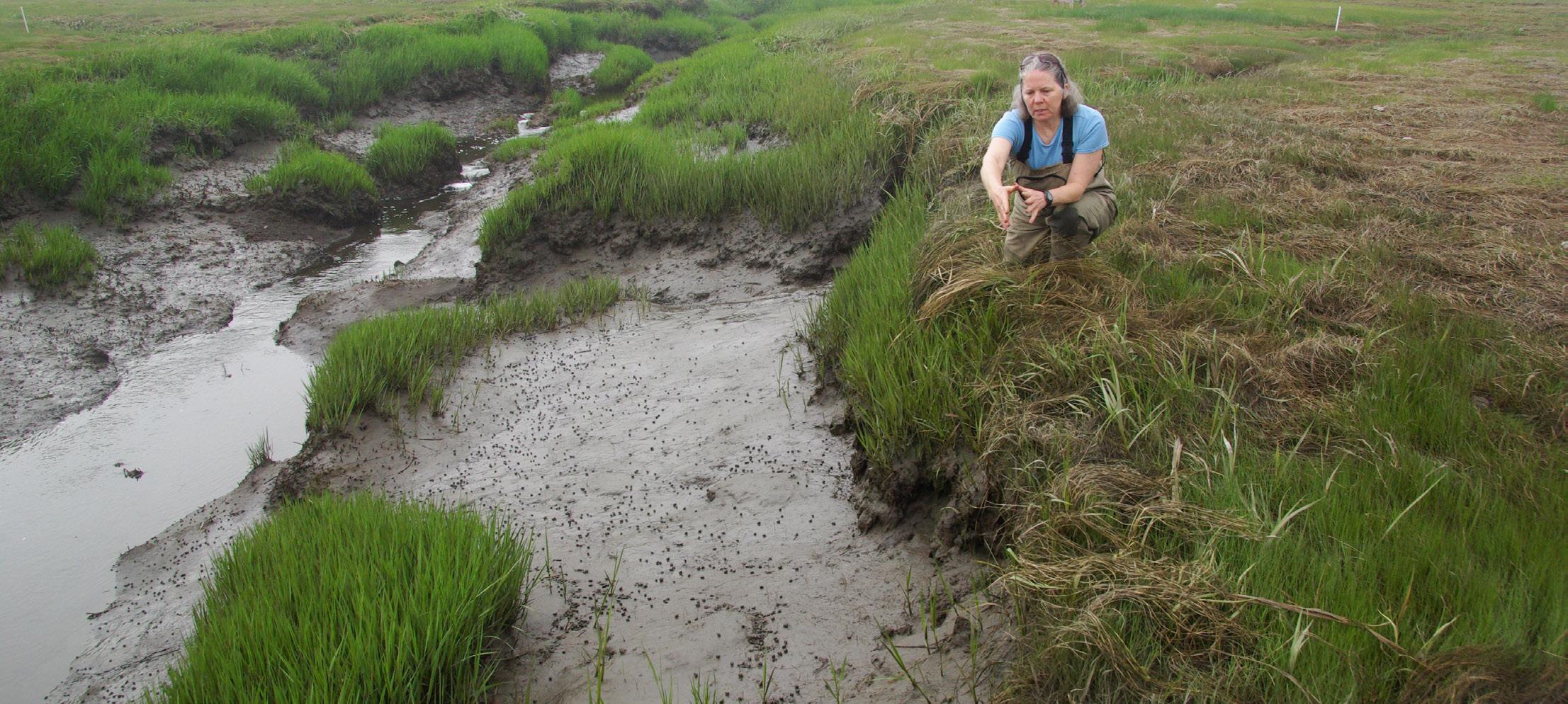
After years of observations, Dr. Deegan says she remembers the exact moment they discovered a significant change.
“Several of the senior scientists—myself included—came back at the end of a long
Linda Deegan kneels next to a slumping stream channel in a TIDE research marsh. / photo courtesy of the TIDE Projectfield day each of them saying, ‘I don’t remember it being this hard to walk through the nutrient enriched marsh when we started this project. Am I just getting older or has something changed?’ And then one of the new students said, ‘I thought that marsh was always like that— well, it’s not like that in the other sites where we haven’t added nitrogen.’”
So they followed the hunch, made some new measurements, and found the structure of the marsh had changed significantly with the added nitrogen. The plants, suddenly awash in a necessary component for growth, no longer needed to dedicate their energy to making roots to seek out nutrients; their root systems were shallower and less dense, thus less capable of holding the marsh together. At the same time, nitrogen-consuming microbes were breaking down organic matter in search of carbon to fuel the chemical processes that allow them to take up nitrogen. This combination made the marsh creek edges more susceptible to erosion by tides and storms.
It took more years than most experiments are run for, but increased susceptibility to erosion steadily altered the shape of stream channels. The ground along the
edges of the streams, previously held in place by a deep network of roots, now collapsed underfoot. Chunks of marsh fell off the edges as the roots no longer held the marsh together. As the years went on, fish and other organisms that travel along stream floors to seek out food began to suffer from difficult terrain, resulting in slower growth and fewer fish.
These findings, published in Nature, upended the way people thought about the effects of eutrophication on marshes. “And we never would have known any of that,” says Dr. Deegan. “If we hadn’t done the project at an ecosystem scale and over such a long time.”
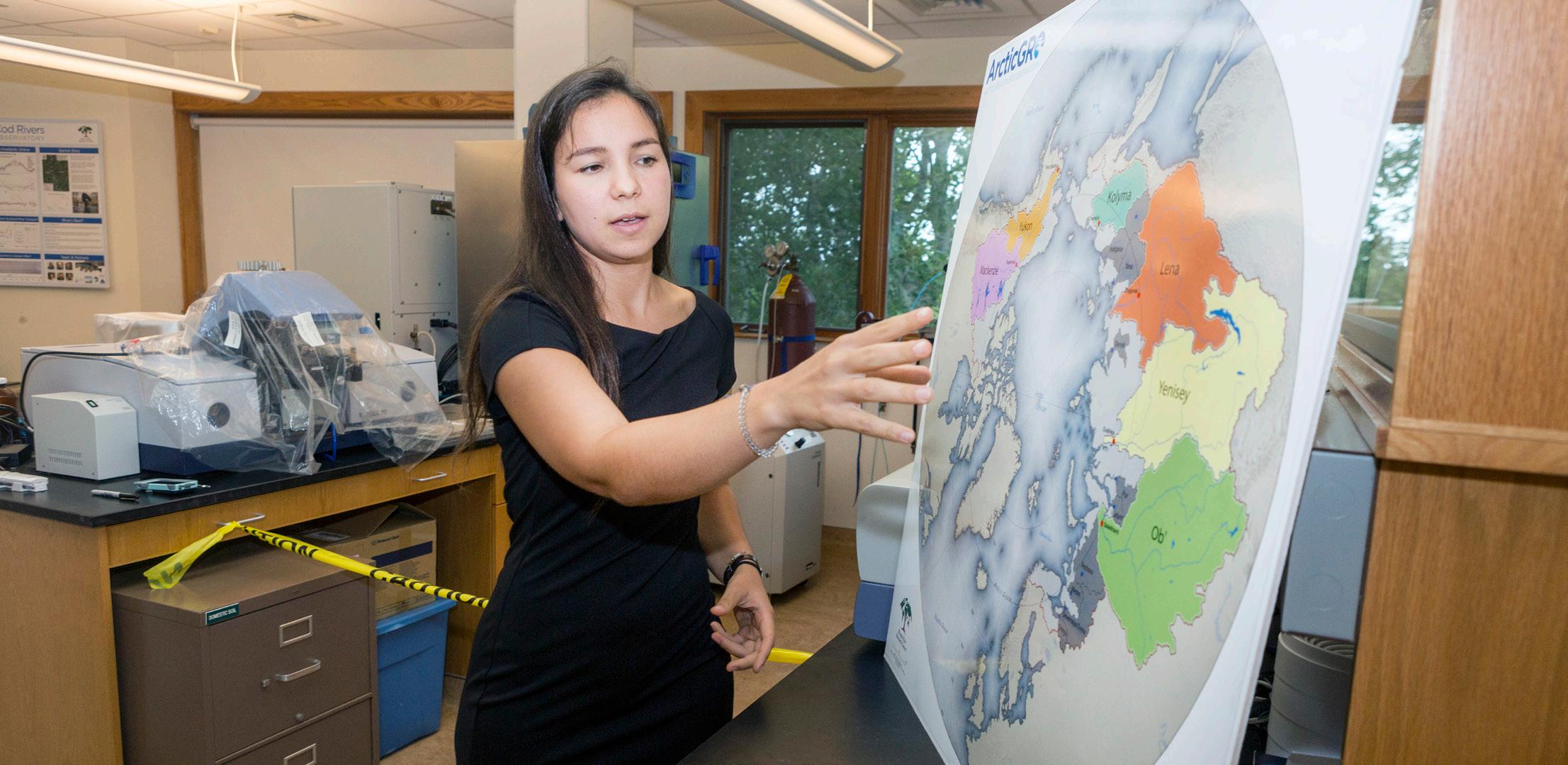
A pipe you can turn off
Over the decades, the TIDE project not only faced the challenges of running a consistent project for so long, but also of justifying making intentional changes to an otherwise healthy ecosystem. The question lingered: If the goal is to protect ecosystems from human disruption, what do we gain from knowingly tinkering with them?
Humans have already accidentally conducted thousands of ecological change experiments across the
globe. Casually inflicted pollution, deforestation, or extinction with no control group, no careful observations, no time limits or safeguards—by scientific standards these are reckless and poorly designed experiments.
In Dr. Deegan’s mind, this makes controlled studies like TIDE even more significant.
“We need to know the true impact of the changes that we are already imposing on the environment. And once we do, we need to be able to halt those changes that threaten the integrity of an ecosystem.” Says Dr. Deegan. “This is a pipe I can easily turn off. Not like when you build a housing development and then you’re stuck with all those houses and their impacts forever.”
Climate change is perhaps the most all-encompassing of these involuntary experiments. As ArcticGRO’s and TIDEs results indicate, ecosystem responses to human disturbance, whether it is climate warming or nutrient over enrichment, are complex. Understanding and adapting to these responses will depend on continued monitoring, observation and experimentation.
A testament to the people
In the world of research, rife with limited grants and time-bound fellowships, ArcticGRO and TIDE have been uniquely successful. Research Associate, Hillary Sullivan, who has been part of the TIDE project since 2012, attributes this to the dedication of the researchers, who showed up year after year to get the research done even when funding wasn’t certain or while enduring a global pandemic.
“These large scale projects are a testament to the people that are involved in the effort, and the work that goes in behind the scenes to keep it running,” says Sullivan.
Both ArcticGRO and TIDE plan
to continue. ArcticGRO is seeking additional funding to analyze new chemical constituents and continue providing invaluable data for scientists and educators to understand how rivers are responding to a warming climate. “ArcticGRO has improved our understanding of the Arctic, and our work is just getting started,” says Dr. Zolkos. “Continuing will be essential for generating new insights on climate change, northern ecosystems, and societal implications.”
TIDE has now shifted to a new phase of study—observing the legacy of the added nitrogen on marsh recovery in the face of climate change induced sea level rise. Nitrogen additions were halted six years ago and researchers hope to gain insights
In the news: highlights
The Boston Globe quoted Dr. Max Holmes in an article on climate warming and extreme weather.
The Boston Globe quoted Dr. Christopher Schwalm in an article on collaborative research that showed increasing risks to human health from heat and humidity. Multiple outlets— including The Guardian, Grist, Scientific American, and Phys. org—quoted lead author Carter Powis of University of Oxford in their coverage. Grist also covered the research in an article asking, “Will sweat help us survive climate change?”
The Washington Post quoted Dr. Brendan Rogers in a story covering the Alaska Fire Service’s plan to suppress some fires to protect carbon, a pilot program based on research by Woodwell Climate. The article was also posted on Anchorage Daily News.
The Conversation published an article covering our recent climate risk assessment for Addis Ababa, Ethiopia, written by Dr. Abay Yimere, a collaborator on the assessment and a postdoctoral researcher at Tufts University. The same article was also published to Phys.org and referenced in coverage by The Jerusalem Post
The Vineyard Gazette interviewed Dr. Christopher Schwalm about the climate risk assessment produced for Martha’s Vineyard, which examined local future threats from drought, rainfall, storms, and wildfires.
Dr. Jen Francis was quoted in an AP News article about the cyclone that caused major flooding in Libya. The article was widely syndicated, including to TIME and EuroNews
Global News featured Dr. Jen Francis in a video about El Niño, and how the weather cycle is affecting global heating.
into marsh restoration and ways to improve their resilience to sea level rise.
Thinking in the long-term is not something humans have historically excelled at, Dr. Deegan admits. But the more we try to expand our curiosity past immediate cause and effect, the better we get at understanding nature. If you want to understand an ecosystem, you have to think like an ecosystem—which means longer time scales and larger areas that encompass every aspect of the system.
“Nature tends to take the long view and people tend to take the short,” says Dr. Deegan. “So if you can stick with it for the long view, I think you see things in a very different way.”
A EurekAlert! article covered research from earlier this summer by Dr. José Safanelli, which calculated the vast amount of carbon stored in Brazil’s legal mining sites.
Dr. Zach Zobel was quoted by The Boston Globe on the ‘boom or bust’ precipitation patterns in the Northeast, which are increasing due to climate change.
In an article about phasing out fossil fuels, Fast Company quoted Dr. Max Holmes on how the longer we delay significant climate action, the more challenging it will be to reach our climate goals. His quote was also included in an Um só Planeta article on the energy transition (Portuguese).
Melissa Shapiro co-authored an article reflecting on a weeklong workshop for Indigenous youth in Arendal, Norway, published by Harvard’s Belfer Center and Arctic Portal.
The Center for Climate and Security published an article to highlight climate security risk reports for Iran and Türkiye, recently completed in collaboration with Woodwell Climate.
Polaris mentor Dr. Heidi Golden wrote a blog post about her experience on the YK Delta with the Polaris Project this summer.
Dr. Chris Neill was interviewed by The Falmouth Enterprise about Falmouth’s water quality problems caused by nitrogen runoff from land.
The Emerging Leadership Initiative interviewed Dr. Nigel Golden about his passions, the challenges he’s faced entering the field of collaborative conservation, and his ideas for the future.
A Morningstar article mentioned Wellington Management’s “impressive partnership” with Woodwell Climate.
Please help us to conserve paper. To receive this newsletter electronically, please send your email address to info@woodwellclimate.org.
woodwellclimate.org/give
@woodwellclimate
#sciencefortheworld
CLIMATE SCIENCE FOR CHANGE

Donations play an important role in securing the future of Woodwell Climate Research Center’s work—and help safeguard the health of our planet for generations to come.




